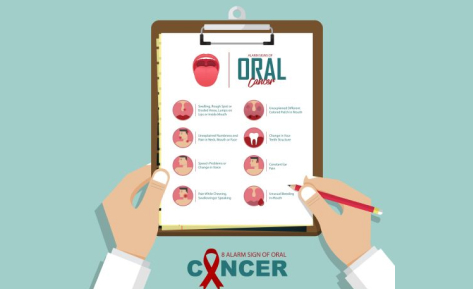
Did you know that dentists often serve as the first line of detection of oral and throat cancers? With regular dental cleanings and exams every six months, your dentist holds a unique role in regular evaluation of your head, neck, mouth and throat which can allow for earlier detection of these cancers. Oral cancer screenings are minimally invasive and can be completed in a short period of time, about five minutes, with visual and tactile examination by your dentist. At Katy Trail Dental, we complete a head and neck examination along with a thorough oral examination as part of every regular dental checkup. Our dentists understand the value of early detection and referral for the comprehensive care and well-being of our patients.
What does a head and neck exam involve? As your dentist, we will explain the head and neck exam prior to starting to walk you through the process, ensuring your comfort and understanding. We start with a visual inspection of the face, head and neck for asymmetry or skin changes. We encourage patients to visit a dermatologist for regular skin checks, especially if irregular skin lesions or moles are discovered.
The examination will start at the collar bones and move up toward the head, checking the lymph nodes on both sides. Most head and neck cancers spread, or metastasize, through lymph vessels. Your dentist will check for any lymph nodes that are enlarged, fixed or hard in consistency. With gloved hands, your dentist will palpate your collarbones, neck, thyroid gland, under your chin and next to your ears where your TMJ, or temporomandibular joint, is located. Your dentist will ask you to open and close, and ask if you have had any symptoms or sensitivity of your TMJ on either side. This invites a conversation regarding possible TMD, or temporomandibular joint disorder. As always, let your dentist know if you have noticed an abnormal lymph node or any issues with your TMJ.
Next, your dentist will change gloves and continue with an intraoral exam. We will inspect the lips, gums, oral mucosa, tongue, floor of mouth, hard and soft palate, the tonsils and oropharynx (part of the throat behind the mouth). As always, if you notice any new or unusual sores, growths or lesions in your mouth, it is important to let your dentist know so they can evaluate. We encourage you to ask any questions you may have throughout the oral cancer screening – we love to educate our patients so that they are empowered to take care of their oral and overall health.
 What is next? If a suspicious or abnormal finding is discovered during the oral cancer screening, your dentist may recommend evaluation by a specialist, such as an oral surgeon or oral pathologist. These are dentists who have undergone extensive specialized training to evaluate, diagnose and treat oral pathologies and cancers. We work closely with these specialists to collaborate on your care and ensure your needs are addressed.
What is next? If a suspicious or abnormal finding is discovered during the oral cancer screening, your dentist may recommend evaluation by a specialist, such as an oral surgeon or oral pathologist. These are dentists who have undergone extensive specialized training to evaluate, diagnose and treat oral pathologies and cancers. We work closely with these specialists to collaborate on your care and ensure your needs are addressed.
The American Cancer Society anticipates approximately 58,450 new cases of oral or oropharyngeal (throat) cancer in 2024. The most common sites of these cancers include the tongue, tonsils and oropharynx (the part of the throat behind the mouth), the gums, and floor of mouth. Tobacco and alcohol use increase risk of oral and oropharyngeal cancer. Human papillomavirus (HPV) infection increases the risk of oropharyngeal cancer. If you have questions about these cancers and your individual risk, we encourage you to ask questions to your dentist.
The topic of oral pathology and cancer can cause emotions of worry, concern, fear, anxiety and more. As your dentists, we acknowledge and validate these emotions, and hope to alleviate these feelings by educating and providing tools in order to allow for your best care.
Dentist-Recommended Resources:
What Are Oral Cavity and Oropharyngeal Cancers? The American Cancer Society.




